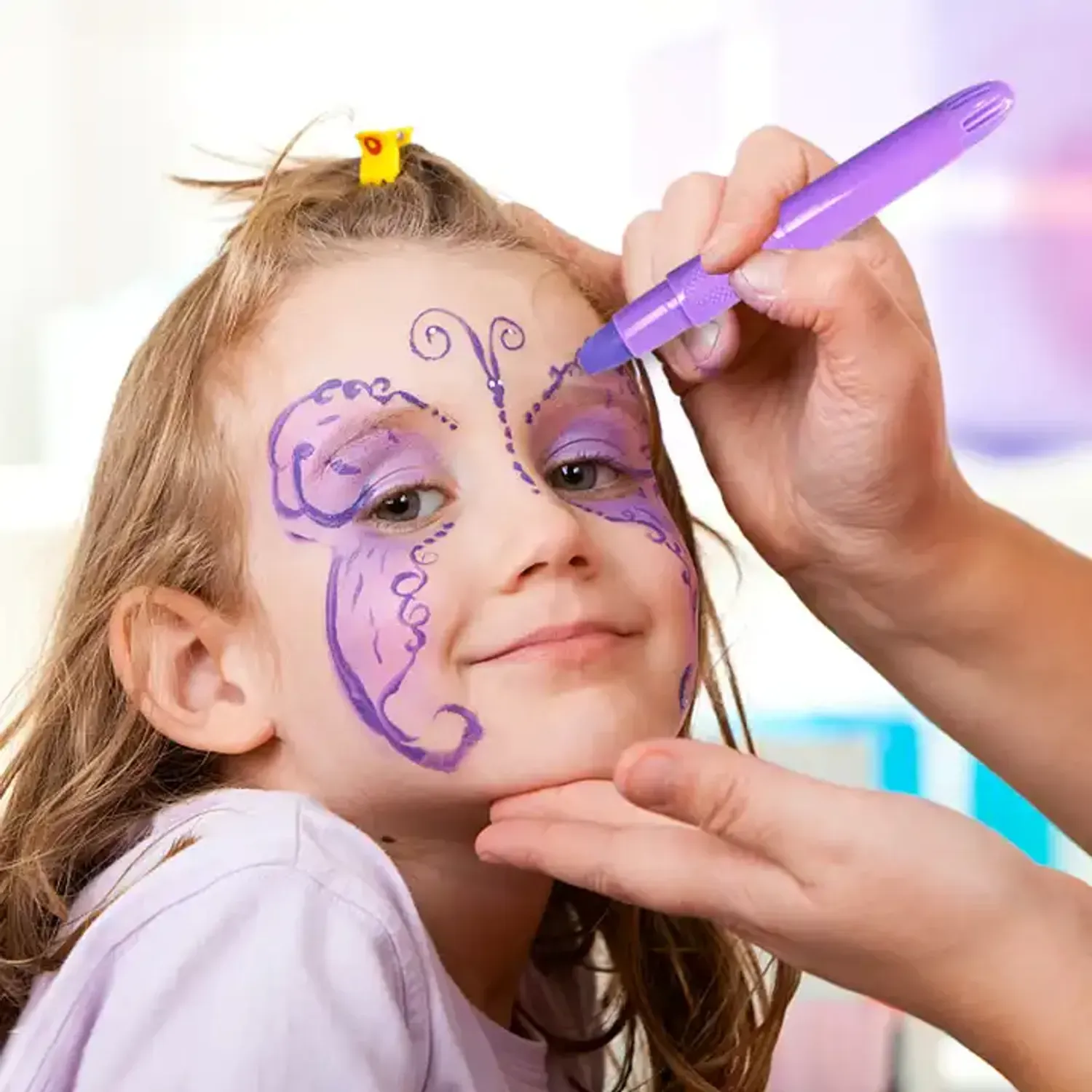betty@kaihong888.com

Get A Quote
How to Sanitize and Clean Your Face Painting Brushes
Face painting is a popular and creative way to bring color and excitement to parties, festivals, and various events. However, to ensure a safe and enjoyable experience for everyone, it’s crucial to maintain proper hygiene practices, especially when it comes to your face painting brushes. Sanitizing for face painting is not only essential for the health of your clients but also for preserving the quality of your face paint products. In this blog, we’ll explore the best methods for sanitizing and cleaning your face painting brushes, ensuring that your tools remain in top condition and safe to use.
Why Sanitizing for Face Painting is Essential
The Importance of Hygiene in Face Painting
Face painting involves close contact with the skin, making hygiene a top priority. Without proper sanitization, brushes can become breeding grounds for bacteria, leading to skin infections, allergic reactions, and other health issues. By implementing effective sanitizing practices, you can prevent the spread of germs and ensure that your face painting sessions are both safe and enjoyable.
Protecting Your Clients and Your Reputation
As a professional face painter, your reputation is built on the quality of your work and the safety of your clients. Ensuring that your face paint products and tools are sanitized demonstrates your commitment to providing a high standard of service. This not only protects your clients but also helps build trust and loyalty, leading to repeat business and positive word-of-mouth referrals.
How to Sanitize and Clean Your Face Painting Brushes
Choosing the Right Face Paint Products
Before diving into the cleaning process, it’s important to choose face paint products that are safe and easy to sanitize. High-quality, professional-grade face paints are typically designed with hygiene in mind, making them easier to clean and maintain. Look for face paints that are non-toxic, hypoallergenic, and easy to remove from brushes and sponges.
Daily Cleaning Routine for Brushes
Maintaining a daily cleaning routine for your face painting brushes is essential for preventing the buildup of paint residue and bacteria. Here’s a step-by-step guide to ensure your brushes stay clean and sanitary:
- Rinse Immediately After Use: After each face painting session, rinse your brushes thoroughly under warm running water. This helps remove excess paint and prevents it from drying on the bristles.
- Use a Brush Cleaner: Invest in a high-quality brush cleaner specifically designed for face painting brushes. Apply a small amount to the bristles and gently massage it in to break down any remaining paint and debris.
- Rinse and Repeat: Rinse the brushes again under warm water until the water runs clear. For heavily soiled brushes, you may need to repeat the cleaning process several times.
- Dry Properly: Gently squeeze out excess water from the brushes and reshape the bristles. Lay the brushes flat on a clean towel to air dry, ensuring they are not left standing upright, as this can cause water to seep into the handle and loosen the bristles.
Deep Cleaning and Disinfecting
In addition to your daily cleaning routine, it’s important to perform a deep cleaning and disinfecting process on your face painting brushes at least once a week. This is particularly crucial if you’re working with large groups or attending multiple events.
- Soak in Disinfectant Solution: After your initial cleaning, soak your brushes in a disinfectant solution specifically designed for makeup and face painting brushes. Make sure to follow the manufacturer’s instructions for dilution and soaking time.
- Rinse Thoroughly: After soaking, rinse the brushes thoroughly under warm water to remove any traces of disinfectant. Residual disinfectant can cause skin irritation, so this step is vital.
- Condition the Bristles: To keep your brushes soft and pliable, apply a small amount of brush conditioner or a mild hair conditioner to the bristles. Rinse thoroughly and dry as usual.
- UV Sterilization: For an extra layer of protection, consider using a UV sterilizer to sanitize your brushes. UV light effectively kills bacteria and viruses without the need for harsh chemicals.
Sanitizing Sponges and Other Face Painting Tools
Cleaning Face Painting Sponges
Sponges are another essential tool in face painting, and they require just as much attention as brushes. To sanitize sponges effectively:
- Rinse Thoroughly: After use, rinse your sponges under warm water to remove as much paint as possible.
- Use a Gentle Cleanser: Apply a gentle, anti-bacterial cleanser to the sponge and work it into a lather. Avoid using harsh soaps that can degrade the sponge material.
- Disinfect and Rinse: Soak the sponge in a disinfectant solution for the recommended time, then rinse thoroughly under running water.
- Dry Completely: Squeeze out excess water and allow the sponge to air dry completely before storing it away. Avoid using sponges that are still damp, as this can encourage mold growth.
Caring for Other Tools
Don’t forget to sanitize other face painting tools, such as palettes, containers, and applicators. Wipe down these surfaces with disinfectant wipes or a solution of water and rubbing alcohol. Ensure that all tools are completely dry before storing them, as moisture can lead to bacterial growth.
Best Practices for Sanitizing Face Painting Kits
Maintaining a Clean Workstation
A clean workstation is just as important as clean brushes and tools. Make it a habit to sanitize your work area before and after each face painting session. Wipe down surfaces with disinfectant wipes and organize your face paint products to minimize cross-contamination.
Using Disposable Applicators
For added hygiene, consider using disposable applicators, such as cotton swabs or disposable sponge wedges, especially when working with large crowds. This helps reduce the risk of spreading germs between clients.
Storing Your Face Paint Products
Proper storage of face paint products is crucial for maintaining their quality and preventing contamination. Keep your paints in a cool, dry place, and always close lids tightly after use. For added protection, store your brushes and sponges in a clean, airtight container.
Conclusion
Maintaining proper hygiene in face painting is not just about keeping your tools clean—it's about ensuring the safety of your clients and the longevity of your artistry. By following the sanitization and cleaning techniques outlined in this article, you can provide a safe and enjoyable experience while preserving the quality of your face painting brushes and products.
For those serious about face painting, using high-quality products that are easy to sanitize is essential. KHY offers a comprehensive range of professional-grade face paint products and brushes designed to meet the highest standards of safety and performance. Whether you’re a seasoned professional or just starting out, KHY provides the tools you need to achieve vibrant, hygienic, and long-lasting face painting results. Explore our collection today and elevate your face painting practice with KHY.

